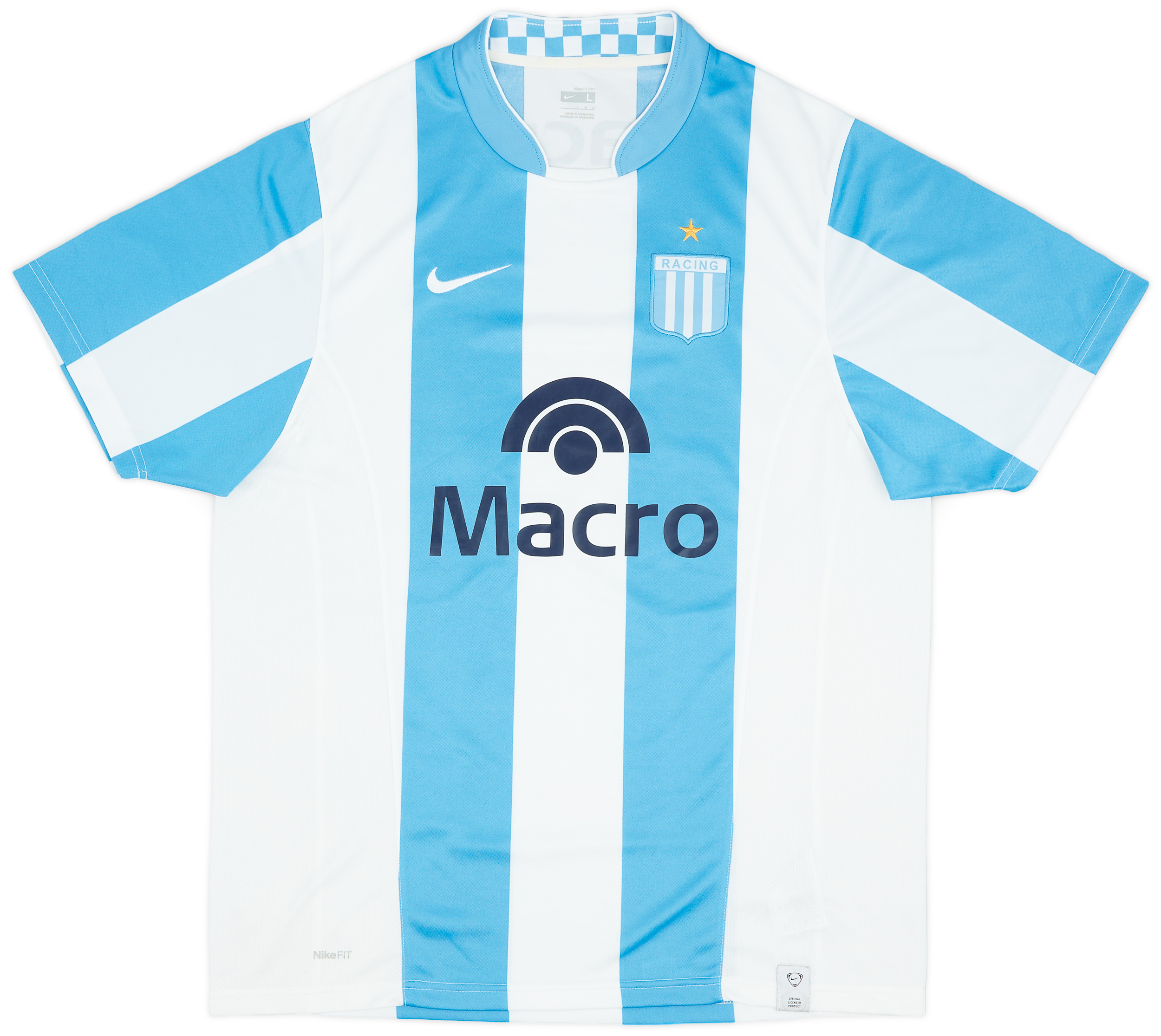Racing Club
Introduction Racing Club, one of Argentina’s most storied football clubs, stands as a titan in South American football. Founded in 1903, Racing has cultivated a rich history woven into the fabric of Argentine culture. Known as “La Academia”—a nod to its tradition of producing exceptional talent—the club boasts a vibrant identity intertwined with pride, passion, […]
2008-09 Racing Club Home Shirt - 8/10 - (L)
118.99£ - ca: €140
2006-07 Racing Club Home Shirt - 9/10 - (XL)
118.99£ - ca: €140
1997-98 Racing Club Topper Reissue Away Shirt
103.99£ - ca: €123
1997-98 Racing Club Topper Reissue Home Shirt
94.99£ - ca: €112
2021 Racing Club Away Shirt (S)
94.99£ - ca: €112
2009-10 Racing Club Santander Third Shirt - 9/10 - (S)
70.99£ - ca: €84
Introduction
Racing Club, one of Argentina’s most storied football clubs, stands as a titan in South American football. Founded in 1903, Racing has cultivated a rich history woven into the fabric of Argentine culture. Known as “La Academia”—a nod to its tradition of producing exceptional talent—the club boasts a vibrant identity intertwined with pride, passion, and a loyal fanbase. The club’s colors, blue and white, are more than just stripes; they symbolize a legacy that spans over a century of competitive brilliance.
Club History
Racing Club was established on March 25, 1903, by a group of enthusiastic Englishmen and Argentine locals in Avellaneda, Buenos Aires. Originally named “Racing Club de Avellaneda,” the club quickly began to carve its niche in Argentine football. The early years saw Racing securing its first Primera División title in 1913, setting the stage for a successful run in the following decades.
The club faced significant challenges during the mid-20th century, such as financial difficulties and fluctuating performance. However, the emergence of a golden era in the 1960s significantly bolstered Racing’s profile. Under the management of esteemed coaches and led by talented players, Racing clinched four consecutive league titles from 1961 to 1964 and saw unparalleled success on the international stage, further solidifying their stature.
Achievements
Racing Club’s achievements in Argentine football are impressive and numerous. The highlight of their domestic success is the Argentine Primera División championships, of which the club has won a remarkable 18 titles as of 2023. Their first championship was claimed in 1913, and the club’s most recent title was secured in 2019.
On the international front, Racing has tasted significant success in prestigious tournaments. In 1967, the club won its first and only Copa Libertadores title, marking an extraordinary period in their history. Racing also triumphed in the Intercontinental Cup the same year, defeating Celtic FC, adding a layer of distinction to their already illustrious legacy. In total, Racing has claimed two Copa Intercontinental titles and is recognized for contributing to the development of international football in South America.
Significant Players and Matches
The history of Racing Club is adorned with exceptional players who have left an indelible mark on the club. One of the most notable figures is Ricardo Enrique Bochini, known for his visionary play and dribbling skills, who spent the bulk of his career with the club, guiding them through both triumphs and trials. Other celebrated players include the legendary goalkeeper Ubaldo Rojas, and forward Gabriel Hauche, whose contributions have remained pivotal in their respective eras.
In terms of landmark matches, the 1967 Copa Libertadores final against Nacional of Uruguay is remembered as a climactic moment in Racing’s history. The first leg ended in a 2-1 victory for Nacional, but Racing turned the tide in the second leg, winning 3-1 to clinch the title. This victory culminated in a jubilant homecoming for the club, highlighted by a raucous reception from fans—an unforgettable celebration of their storied rivalry.
Cultural Impact
Racing Club’s influence transcends football; it plays a critical role in the cultural identity of Avellaneda and Argentina as a whole. The fans, known as “Racinguistas,” are known for their unwavering loyalty and passion, often filling the Estadio Presidente Perón to creating an electric atmosphere during home matches. The club’s motto, “La Academia,” is not just a name; it signifies the commitment to excellence, both on and off the pitch.
Culturally, Racing has nicknamed its stadium “El Cilindro,” which has become a symbol of pride for the supporters. The club’s colors have inspired local artists and musicians, further embedding Racing into Argentine cultural celebrations, such as the annual ‘Día del Hincha de Racing’ (Racing Fan Day). This event draws fans together, showcasing the emotional connection and legacy surrounding the club.
Conclusion
Racing Club is more than just a football club; it is a historical institution that has played a significant role in shaping Argentine football. From its early foundation, through its golden eras, to its recent resurgence, Racing has been a bedrock of competitive excellence and fan engagement. Its achievements on both a domestic and international scale testify to its enduring quality and ambition. As Racing Club continues to develop its legacy, it remains a source of inspiration for generations of footballers and fans alike, embodying the spirit of Argentine football in every match played.





